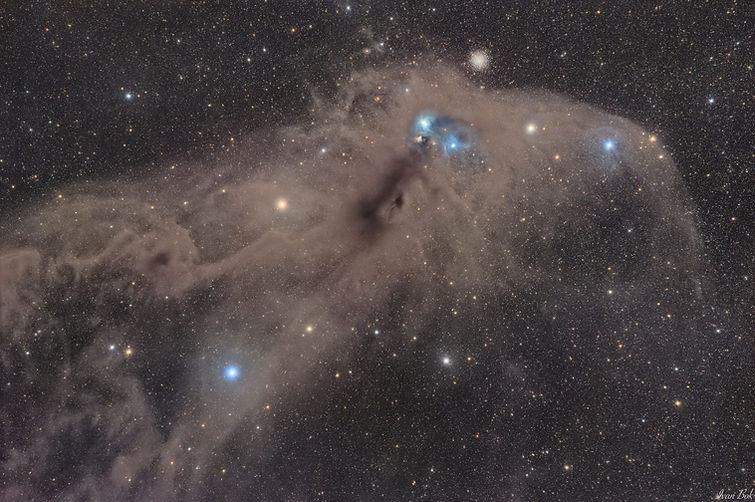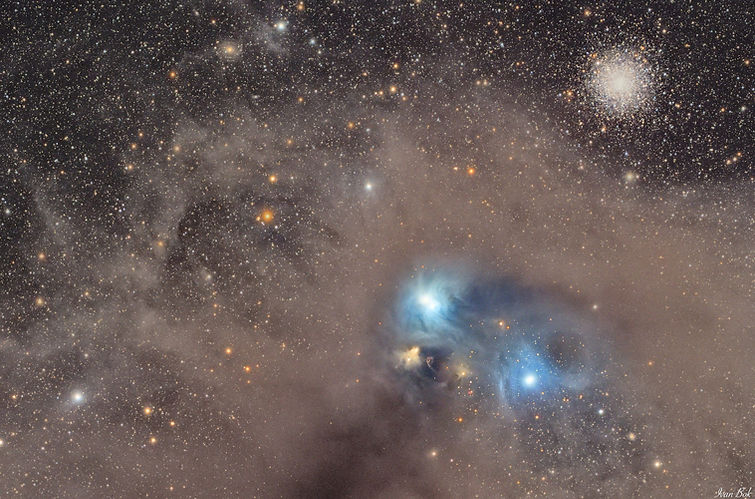
The Corona Australis Molecular Cloud

Crop of the Central Region

Description
The Corona Australis Molecular Cloud is a dusty nebula and star-forming region with both reflection and absorption components. This image here has a combined exposure of 3 hours of data, from a Bortle 3-4 (rural-suburban transition) near Mersing, Malaysia. NGC 6723, an ostensibly adjacent globular cluster (but in fact much farther away from Earth than the nebula), is also visible here on the top right of the blue reflection nebula, NGC 6726/67.
Imaging Details
LRGB Image
Location: Mersing, Malaysia
Date(s): July 2025
Telescope: Takahashi FSQ85ED at f/5.3
Camera: ZWO ASI6200MM
Mount: ZWO AM5 Harmonic Drive Mount
Exposure Integration: 3 hours in LRGB
Image reduction, integration and processing with Astro Pixel Processor and Pleiades Astrophoto PixInsight.

